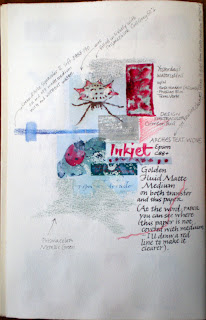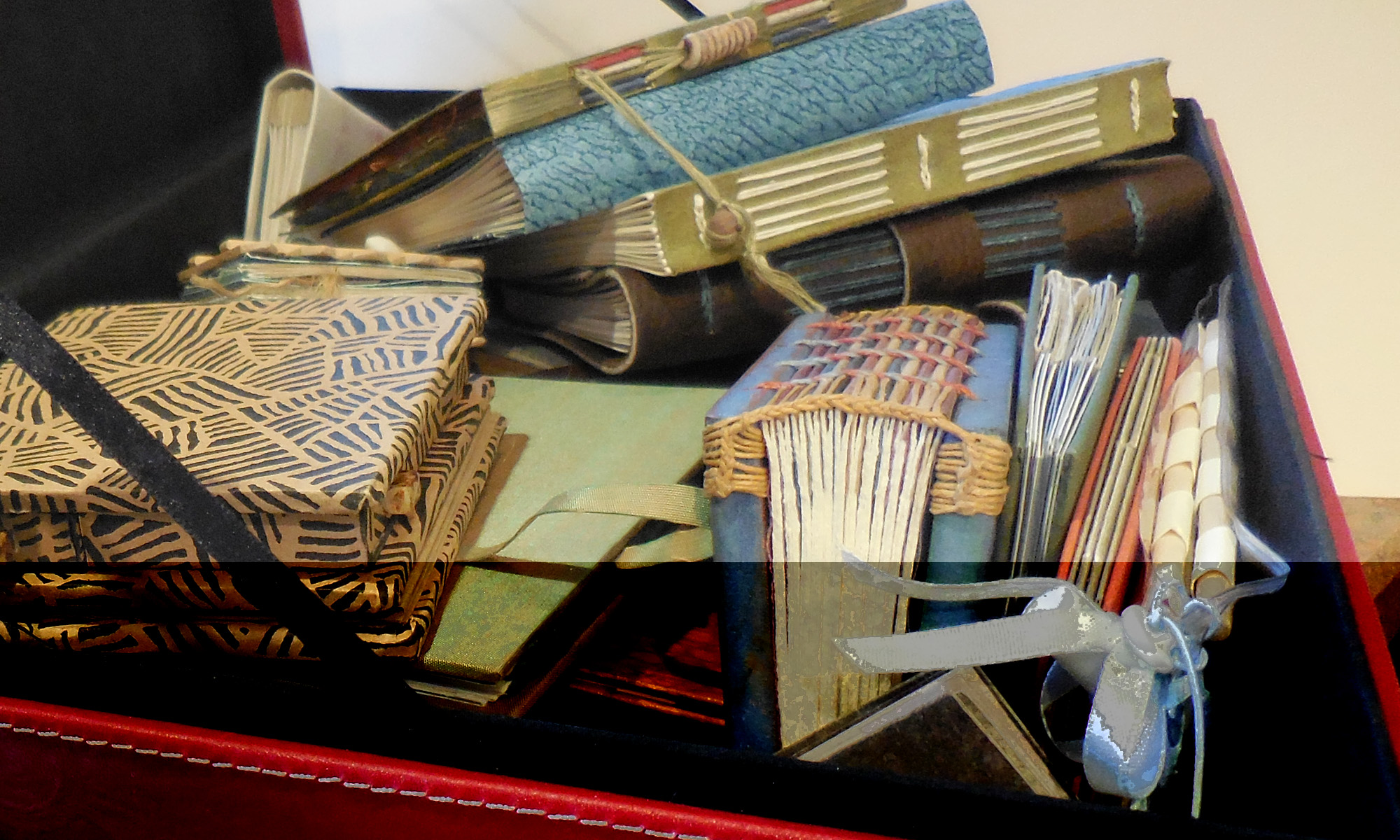 I’ve tried this transfer technique before, with limited success. I’d call this limited success as well, but I’ve got a few ideas about what I’ve done right and what I’ve done wrong. That’s progress.
I’ve tried this transfer technique before, with limited success. I’d call this limited success as well, but I’ve got a few ideas about what I’ve done right and what I’ve done wrong. That’s progress.
I made a psd file with 4 images from 2 pages of my insect book (see here and here) and reversed the image so that the lettering would transfer right-way around. I printed the image on JetPaper — I have some from way back, so I think it’s the right stuff — on my Epson 88+ inkjet printer. Following instructions from the Yahoo group Inkjet Transfers, I trimmed the image and used a 1-inch foam brush to cover both the image and the receiving paper (Arches Text Wove in my journal) with a coat of Golden Fluid Matte Medium. Then I put the image face down on the page and rubbed the back with a bone folder for awhile. When I pulled up the image, some of the image came up with the paper and some of the paper stayed on the page. I was able to rub off some of the paper that stayed immediately, and some more a little later when everything wasn’t so wet — using a wet finger.
Even now, 5 hours after I made the transfer, and after I’ve photographed it for the blog, I find that I’m able to rub up a little more of the grayish white paper that was covering the image.
I was also interested in what happened when I painted and wrote over the transfer and the matte medium. Arches Text Wove is a nubbly kind of paper, but I’ve come to like — or at least understand — the sizing. Where there was matte medium the ink — sumi — was laid down more smoothly but the hairlines were thicker and I had to write fairly quickly to avoid pooling ink. Where there was just paper, less ink came out of the pen onto the paper and I had to write more slowly. I drew a red line of colored pencil indicating where the matte medium stopped. The same was true with the Zig Millennium marker write above it; there was no ink flow problem, but the line was smoother over the matte medium than directly on the paper.+
Interesting. A lot of this I already knew, but doing it again brings a more immediate knowledge than the filed-away kind of knowledge. I want to try this some more transfer and some more matte medium.

Beth, it’s good to see you’re having a go at the inkjet transfers. I’ve been lurking on their site for ages and haven’t done a thing yet but I think I’ll have to have a try soon and when I do I’ll put the results (good or bad) on my blog. I enjoy your blog. Thanks.
Hey Beth I like doing transfers using inkjet transparencies. You just have to be sure you get the ones that don’t make the ink permanent. I also use gel medium for the transfers.
With the transparencies you don’t get paper sticking to your page or art work.
You are adventurous with your transfer experiments! I haven’t tried ink jet transparencies yet but I have tried the gel medium and what I do is cover the image in 4 layers. Brush on in one direction, let dry..then go in the opposite direction and let dry—and so on until you have four layers built up. I leave it on overnight and then soak in luke warm water for about an hour, then roll the back of the paper off. It is a time consuming process but I love the results!
Thanks for the comments. I’ll look forward to seeing your attempts, Carol! And hopefully I’ll learn from your results as well.
Toni, you’ll see from the next posts that I went right out and got transparency paper 🙂 Thanks for the advice. I’m sure that when I get the hang of it I’ll agree that transparencies are better for transfers.
Thanks for the advice, Lucy. I guess your technique doesn’t lend itself to a journal, though? Are you soaking the entire substrate paper in water? I’m going to try this soon because it seems like you’d get more consistent results. I hope.